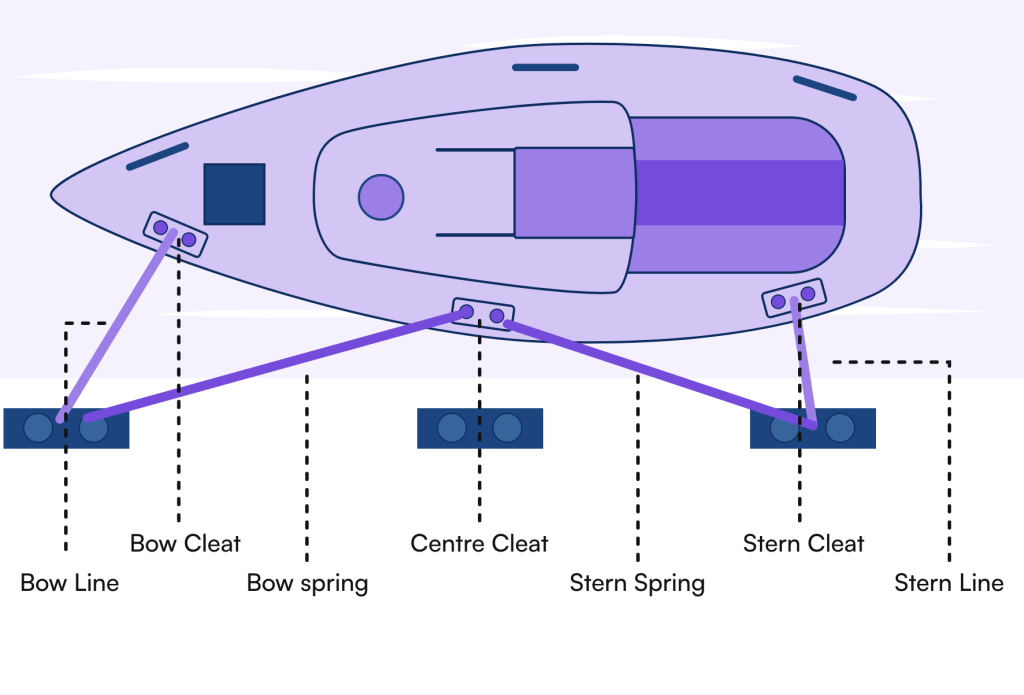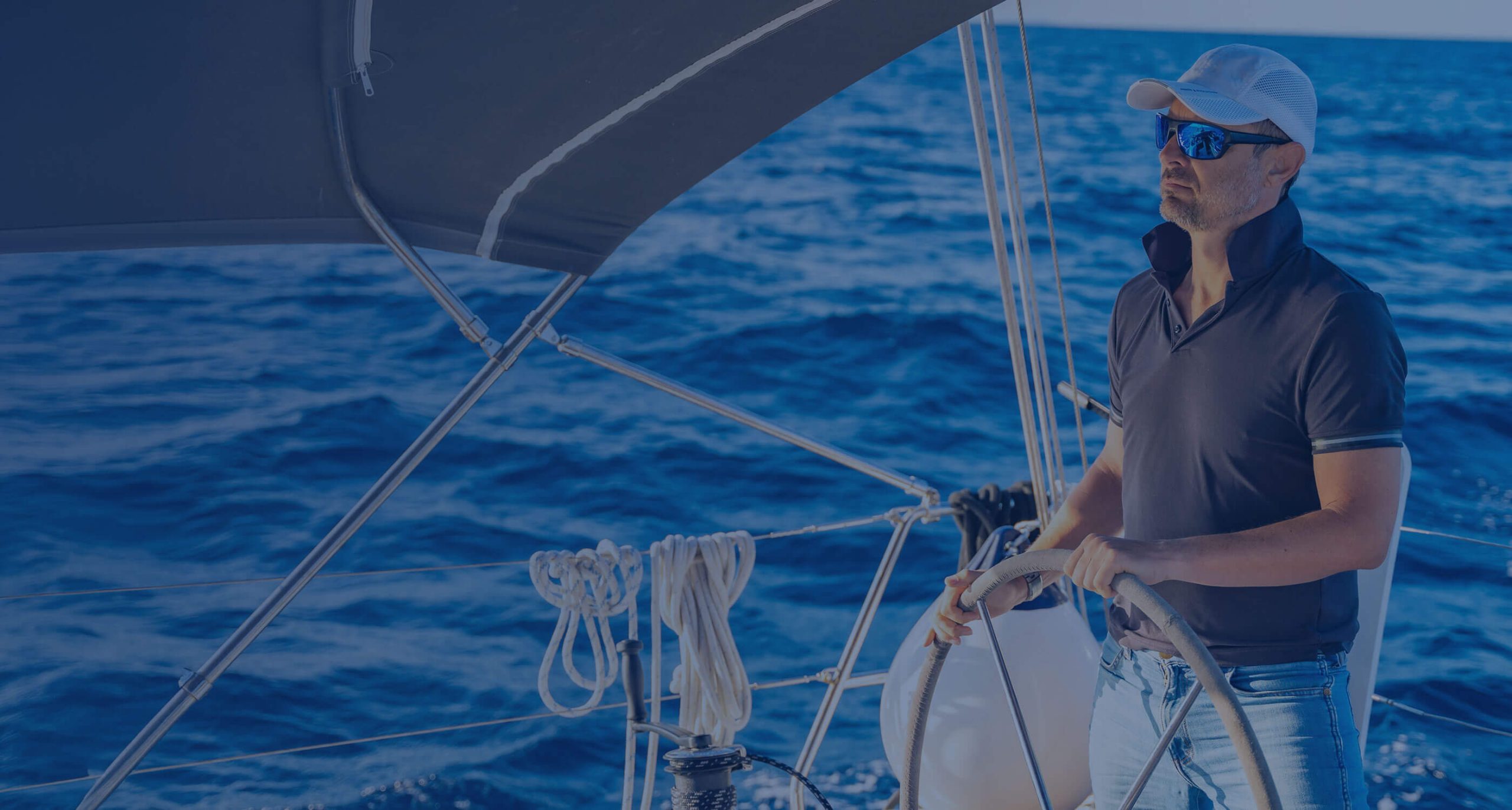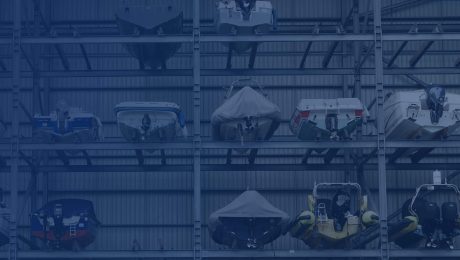Whether you’re brand new to boating or just brushing up before your next trip, knowing a few key terms and best practices can make your time on the water smoother, safer, and more enjoyable. The boating world has its own language—and once you speak it, you’ll feel more confident at the helm, at the dock, and everywhere in between.
Here’s a guide to essential boating and sailing terms and safety practices, brought to you by the Ahoy! Crew.
1. Port vs. Starboard
These terms replace “left” and “right” on a boat.
- Port = the left side of the boat (when you’re facing forward).
- Starboard = the right side. A good way to remember: “Port” is type of red wine, and the left side of the boat is marked at night by a red light
2. Bow and Stern
- Bow = the front of the boat.
- Stern = the rear of the boat. When someone says “walk to the bow,” they mean forward!
3. Windward and Leeward
- Windward = the direction the wind is coming from.
- Leeward (or leeward side) = the direction the wind is blowing toward.
When choosing a slip, mooring, or anchoring spot, understanding wind direction helps protect your boat from unnecessary exposure or rough docking. Typically, it is easier to approach an object (a dock/slip, buoy, man overboard, etc.) when the boat is “above wind” which means the object is on the Leeward side
4. Draft
The draft is the vertical distance between the waterline and the lowest point of the boat (usually the bottom of the keel or propeller).
Why it matters: It determines how shallow the water can be before your boat runs aground. Draft is impacted by many factors such as the boat dimensions, the load onboard, etc.
5. Fenders vs. Bumpers
Fenders are the soft cushions you hang between your boat and the dock (or another boat) to prevent damage.
Many people call them “bumpers,” but fenders is the correct nautical term.
6. Lines (Not Ropes!)
Once a rope is on a boat and used for a specific purpose, it’s called a line.
- A dock (or mooring) line ties your boat to the dock.
- A sheet is a line that controls a sail.
- A halyard raises or lowers a sail or flag.
Here is a schematic drawing of the main types of dock/mooring lines

7. Rig
For further drill-down on how to best secure your boat using dock/mooring lines, please refer to this article.
A boat rig refers to the arrangement and setup of a boat’s sails, masts, and associated hardware – or, more broadly in boating contexts, it can refer to the configuration of propulsion and outfitting.
Here are the two primary meanings:
Sailing Context (Primary Meaning)
In sailing, a rig describes:
- The type, number, and arrangement of sails and masts on a sailboat.
- Defines how the boat is set up to harness wind power.
Common Types of Sailing Rigs
- Sloop – Single mast, with a mainsail and one headsail. (Most common setup.)
- Cutter – Single mast, mainsail plus two or more headsails.
- Ketch – Two masts: a main mast and a shorter mizzen mast located forward of the rudder post.
- Yawl – Two masts as well, but the mizzen mast is aft of the rudder post.
- Schooner – Two or more masts; the foremast is shorter than the main mast.
- Catboat – Simple setup with a single mast and single sail.
- Gaff Rigged – Uses a horizontal spar (gaff) to extend the sail’s top edge, often seen in traditional or classic boats.
Powerboat Context (Secondary Meaning)
In powerboats and general marine usage, rig can also mean:
- The entire outfitting or configuration of the boat, including:
- Engine setup (e.g. twin-rig for two outboards)
- Trailer + boat + engine package (often called a “rig” at dealerships).
Examples:
- “That’s a nice rig” = complimenting the entire boat and its setup.
- “Twin-rig fishing boat” = boat with two outboard motors.
- “Rigging the boat” = installing engine controls, electronics, steering, and accessories during commissioning.
8. Navigation lights and shapes basics
Here is a summary of the types of navigational lights used in boating, essential for safe night or reduced-visibility operation:
Sidelights
- Red Light (Port side)
- Mounted on the left (port) side.
- Visible from straight ahead to 112.5° aft on the port side.
- Green Light (Starboard side)
- Mounted on the right (starboard) side.
- Visible from straight ahead to 112.5° aft on the starboard side.
Stern Light
- White light
- Mounted at the stern, shining aft and 67.5° forward on each side (total 135° arc).
- Used on all powered and sailing vessels under way.
Masthead Light (Steaming Light)
- White light
- Located over the centerline of the boat (usually on the mast or cabin top).
- Shows an arc of 225°, visible from directly ahead to 22.5° abaft the beam on each side.
- Required on power-driven vessels when under engine power.
All-Round White Light
- White light showing 360° visibility.
- Often used on small power boats (under 12m) in place of separate masthead and stern lights.
- When anchored, this becomes the anchor light.
Anchor Light
- White all-around light.
- Required when a boat is at anchor (except when anchored in special anchorages).
- Must be visible 360°.
Towing Light
- Yellow light. Used by vessels engaged in towing, shown above the stern light.
Navigation Lights – Quick Overview
- Port Sidelight (Red): Mounted on the left side (port); visible from straight ahead to 112.5° aft.
- Starboard Sidelight (Green): Mounted on the right side (starboard); visible to 112.5° aft.
- Stern Light (White): Mounted on the stern; shines backward and partially sideways (135° arc).
- Masthead Light (White): Required on powered vessels; shines 225° forward.
- All-Round White Light: 360° visibility; used on small powered boats or as an anchor light.
- Anchor Light (White): Required at anchor (360° visible).
- Towing Light (Yellow): Used above the stern light on towing vessels.
Here is a summary of the types of navigational shapes (day shapes) used in boating, which are visual signals indicating a vessel’s status during daylight:
Ball (Sphere)
- Shape: Round ball
- Meaning:
- Anchored vessel (one black ball forward).
- Vessel aground (three black balls in a vertical line).
- Use: Shows a vessel is anchored or aground and thus restricted in movement.
Cone (Triangle / Conical Shape)
- Shape: Triangle pointing down.
- Meaning:
- Sailing vessel under sail and engine power must display a cone, point down, indicating it is operating as a power-driven vessel.
- Use: Required when sailing vessels are motor-sailing.
Cylinder
- Shape: Tall rectangle or cylinder.
- Meaning:
- Vessel constrained by her draught (cannot deviate from her course due to water depth).
- Use: Typically large ships in shallow channels.
Diamond
- Shape: Rhombus / diamond.
- Meaning:
- Towing vessel with tow exceeding 200 meters must display a diamond shape where visible.
- Use: Alerts other vessels of long tows.
Cone Point Up / Apex Up (Fishing Day Shape)
- Shape: Two cones with apexes together (hourglass shape).
- Meaning:
- Fishing vessel engaged in trawling or other fishing with gear extending out must display two cones apexes together.
- Fishing vessel engaged in trawling or other fishing with gear extending out must display two cones apexes together.
- Use: Indicates restricted maneuverability due to fishing gear.
Ball-Diamond-Ball
- Shapes: Three shapes in vertical line – ball at top, diamond in middle, ball at bottom.
- Meaning:
- Vessel restricted in its ability to maneuver (e.g. dredging, underwater operations, buoy tending).
- Vessel restricted in its ability to maneuver (e.g. dredging, underwater operations, buoy tending).
- Use: Alerts other vessels to give way as it cannot easily change course.
Two Balls (Vertical)
- Meaning:
- Not under command vessel (engine or steering failure, unable to maneuver).
- Use: Signals other vessels to keep clear.
Day Shapes (Navigation Shapes) – What They Mean
- ⚫ Ball: One ball = anchored. Three balls in a vertical line = aground.
- 🔻 Cone (point down): Indicates a sailboat using engine power (i.e., operating as a powerboat).
- ◻ Cylinder: Vessel is constrained by its draft (common in deep-draft cargo ships).
- ♦ Diamond: Towing vessels with a tow over 200 meters.
- 🔺🔻 Two cones apexes together (hourglass): Fishing vessel restricted in maneuverability due to gear.
- ⚫♦⚫ Ball-Diamond-Ball (vertical): Restricted ability to maneuver (e.g., dredging).
- ⚫⚫ Two balls (vertical): Not under command—engine or steering failure.
9. Trim
To “trim” means adjusting the sails or the balance of the boat for optimal speed and handling. Even powerboats use this term when adjusting the engine angle for performance and fuel efficiency.
10. Knots
- Knots = nautical speed measurement. One knot = 1.15 miles per hour.
- Knots also refers to rope knots. Here is a list of the most popular and essential knots used in boating, with their key uses:
Bowline
- Use: Creates a secure loop at the end of a rope that won’t slip but is easy to untie.
- Purpose: Mooring lines, tying sheets to sails, rescue loops.
- Known as “the king of knots.”
Cleat Hitch
- Use: Secures a line to a cleat quickly and effectively.
- Purpose: Docking and securing boats to docks or pilings.
Clove Hitch
- Use: Quick fastening around posts, rails, or piling.
- Purpose: Temporarily securing fenders or light-duty dock lines.
- Can slip under heavy load, so not for critical mooring alone.
Round Turn and Two Half Hitches
- Use: Strong knot for securing a rope to a post, ring, or piling.
- Purpose: Dock lines, tying to poles, or towing applications.
Figure Eight Knot
- Use: Creates a stopper knot at the end of a line.
- Purpose: Prevents rope ends from slipping out of blocks, cleats, or fairleads.
Sheet Bend
- Use: Joins two ropes of different thicknesses securely.
- Purpose: Extending dock lines or tying different ropes together.
Reef Knot (Square Knot)
- Use: Ties two ropes of similar size together.
- Purpose: Securing sail ties, bundling gear.
- Not for heavy loads; can slip under tension.
Rolling Hitch
- Use: Ties a rope to another rope under tension or a pole.
- Purpose: Adjusting tension on lines, securing fenders to taut lifelines.
Anchor Bend (Fisherman’s Bend)
- Use: Attaches rope to anchor or chain securely.
- Purpose: Tying anchor rode to anchor shank or chain.
Essential Knots & Their Uses
- Bowline: Creates a strong loop at the end of a rope. Used for mooring or rescue.
- Cleat Hitch: Fast, secure method for tying a rope to a cleat. Ideal for docking.
- Clove Hitch: Quick fastening to posts or railings; good for fenders.
- Round Turn & Two Half Hitches: Very secure; ties ropes to poles or rings.
- Figure Eight Knot: Stopper knot to prevent lines from slipping.
- Sheet Bend: Joins two ropes of different thicknesses securely.
- Reef Knot (Square Knot): Used for tying similar-sized ropes together.
- Rolling Hitch: Adjusts tension on another rope or line.
- Anchor Bend: Attaches rope to anchor or chain.
Here is a schematic showcasing some of the above mentioned knots
Photo credit: https://aceboater.com/en-us/five-basic-knots
Key Takeaway
Learning these knots is essential for safe and efficient boating, docking, anchoring, and general seamanship. For a drill-down on these knots types, how to tie them, and much more please refer to this guide.
Ahoy! Tip
The more familiar you are with boating terms and safe practices, the more confident you’ll be on the water—and the more likely your boat and passengers will stay safe. That confidence also helps with your insurance experience, whether you're filing a claim, talking to a marina, or updating your policy.
Need Insurance That Understands Boaters?
Ahoy! was built by boaters, for boaters. Our policies are smart, simple, and designed for real-world boating life.
- Easy quotes
- Location-based risk alerts
- Hassle-free mobile claims
- 24/7 support
Get a Quote with Ahoy! and cruise with confidence.


